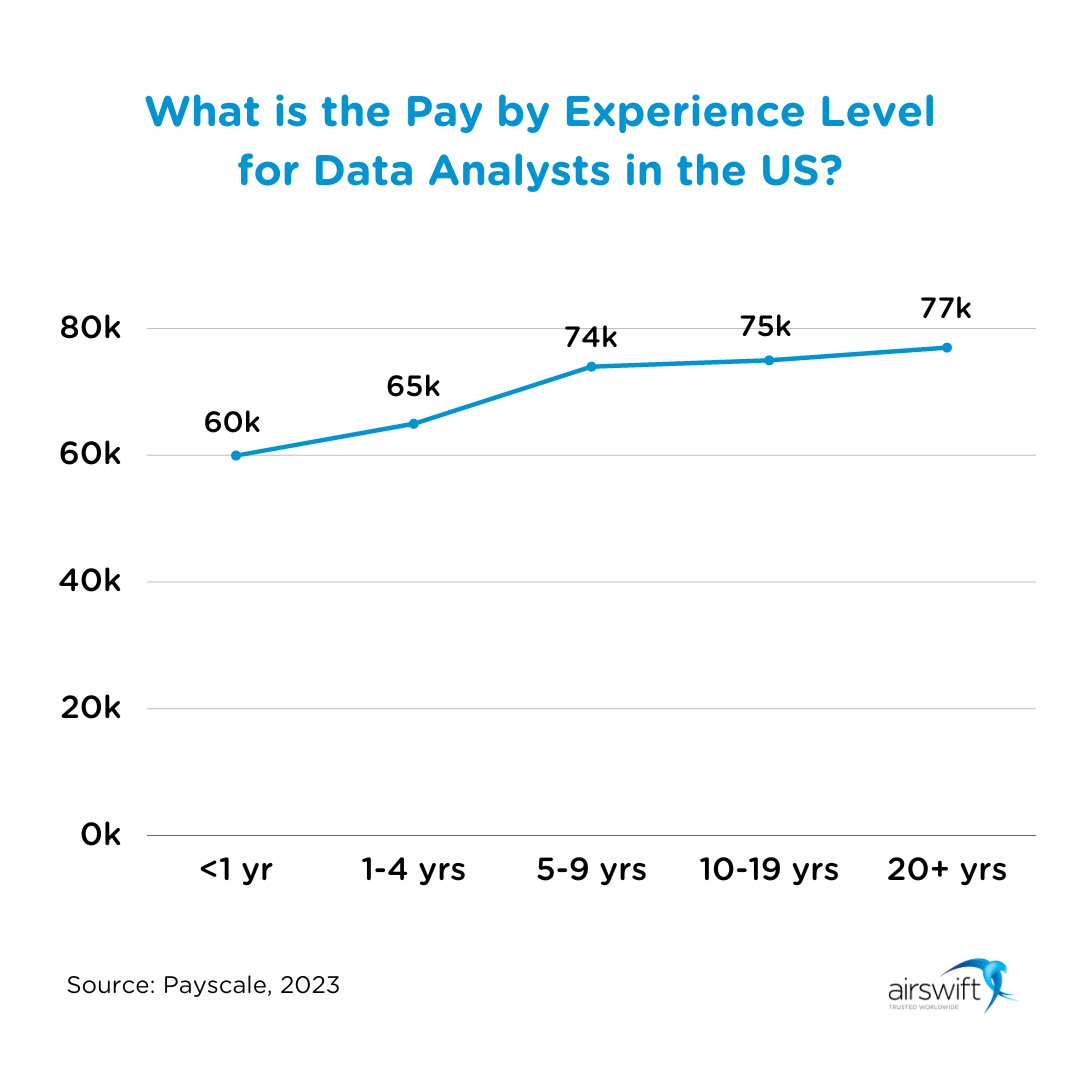
By
Raphael Santos
September 25, 2023
Updated
January 21, 2025
To truly thrive as a data analyst in 2024, you must go beyond just working with data.
Data analysis is evolving rapidly, with over 90% of the world's data generated in just the last two years, according to research by IBM.
Businesses are projected to spend nearly $274 billion on data-driven technologies by 2026, highlighting the growing demand for skilled data professionals who can navigate this vast, complex landscape.
This role now demands a blend of technical expertise and soft skills to not only analyse and interpret data but also to communicate findings in ways that influence stakeholders and drive results.
Must-have technical skills to master
Technical skills encompass a broad range of knowledge and abilities that enable analysts to effectively work with data and perform complex analyses.
For instance, proficiency in SQL allows analysts to extract, manipulate, and analyse data from databases efficiently.
Familiarity with statistical programming languages, such as Python or R, enables analysts to conduct advanced statistical analyses and build machine learning models.
Acquiring expertise in these technical skills empowers data analysts with the essential tools to bring them one step closer to their dream jobs.
Statistical programming languages to master

Statistical programming languages are essential tools for data analysts to effectively analyze and interpret large datasets. Here are a few commonly used statistical programming languages that data analysts should master:
- R is a powerful and widely used language for statistical programming and graphics. It provides a comprehensive set of statistical and graphical techniques, making it ideal for data exploration, visualisation, and analysis.
- Python is a versatile and beginner-friendly programming language that is becoming increasingly popular in the data analysis field. It offers numerous libraries, such as Pandas and NumPy, which provide efficient data manipulation and analysis functionalities.
- Java is a widely used programming language that is known for its scalability and stability. Although not specifically designed for statistical analysis, Java is often used in big data processing and machine learning applications.
- Scala is a programming language that combines functional programming with object-oriented programming. It is well-suited for distributed computing and is commonly used in Apache Spark, a popular big data processing framework.
- MATLAB is a proprietary language that is widely used in academia and industry. It has powerful built-in mathematical and statistical functions and is widely used in aerospace engineering and scientific research.
Mastering these statistical programming languages empowers data analysts to manipulate and analyse complex datasets, apply statistical techniques, and derive meaningful insights.
Each language has its own unique features and strengths, making them valuable tools for data professionals, including data scientists, in various industries and applications.
Analysis and visualisation tools to master

Data analysts should have a solid understanding of a wide range of analysis and visualization tools to excel in their role.
These tools play a crucial role in data exploration, manipulation, and decision-making.
Here are five tools they should master:
- Tableau is a powerful data visualisation tool that allows analysts to create interactive and visually appealing dashboards. It enables users to easily explore and analyze complex datasets, making it an essential tool for data storytelling.
- Python again appearing in this blog’s list. The tool offers a wide range of libraries for data visualisation. Matplotlib and Seaborn, in particular, provide powerful and flexible functionalities for creating static and dynamic visualisations. These libraries can be used to generate charts, plots, and graphs, enabling analysts to effectively communicate complex data patterns.
- SAS is a leading software suite used for advanced analytics and business intelligence. It enables data analysts to extract valuable insights from complex data and make informed business decisions. SAS also offers data management functionalities, making it a comprehensive tool for data analysis.
- Oracle is a popular database management system that data analysts often use for storing and retrieving data. With its robust querying capabilities and advanced analytics features, Oracle allows analysts to perform complex data analysis tasks efficiently.
- PowerBI is a business analytics tool that facilitates data visualization and interactive reporting. It allows data analysts to create visually engaging dashboards and share insights with stakeholders. Power BI's user-friendly interface makes it accessible to non-technical users as well.
Mastering these analysis tools will equip data analysts with the necessary skills to extract meaningful insights and support business objectives efficiently.
Project management tools to master

Project management tools are essential for data analysts to effectively oversee and track projects, manage team members, and organize tasks.
Here are some popular project management tools that data analysts should master:
- JIRA is a widely-used project management tool that allows data analysts to plan, track, and collaborate on projects. It provides features like task assignment, progress tracking, and issue management. JIRA's robust reporting capabilities enable analysts to generate insightful project metrics and monitor team performance.
- Asana is a versatile project management tool that helps data analysts streamline their workflows and track project progress. It allows for task assignment, deadline setting, and progress monitoring. With Asana, analysts can create visual project timelines, assign dependencies, and collaborate with team members in real-time.
- Trello is a user-friendly project management tool that enables data analysts to create customisable boards for organising tasks and projects. Analysts can use Trello's drag-and-drop interface to assign tasks, set due dates, and track progress. Its Kanban-style layout provides a clear visual representation of project status, making it easy to prioritise and manage tasks.
- Notion allows data analysts to create and organise projects in a highly customisable and intuitive manner. It provides features such as task lists, kanban boards, calendars, and databases that allow for efficient project planning, tracking, and collaboration.
By mastering these project management tools, data analysts can effectively manage their projects, collaborate with team members, and ensure timely completion of tasks, ultimately leading to successful project outcomes.
Linear algebra to master
Linear algebra is a fundamental branch of mathematics that plays a crucial role in data analysis, particularly in the field of machine learning and deep learning.
Understanding linear algebra is essential for performing vector, matrix, and tensor operations that are at the core of these algorithms.
In machine learning, variables and data are often represented as vectors and matrices. Linear algebra provides the tools to manipulate and operate on these high-dimensional data structures efficiently. For example, operations like matrix multiplication, matrix factorisation, and eigendecomposition are extensively used in many machine learning algorithms.
Deep learning, which is a subset of machine learning, heavily relies on linear algebra to model the connections between layers of neurons. Neural networks are essentially a composition of various linear transformations, activation functions, and weight updates, which are all enabled by linear algebra operations.
Calculus also plays a crucial role in building objective or cost functions for machine learning algorithms. These functions measure the error or discrepancy between the predicted and actual values. Calculus provides the tools to optimise these functions, enabling the algorithm to learn and improve over time.
In summary, mastering linear algebra is essential to excel in machine learning and deep learning.
It provides the necessary foundation to understand and manipulate matrices, vectors, and tensors, as well as the calculus-based optimisation techniques used in these algorithms.
Certifications to boost your data analyst career
Certifications are a powerful way to validate your skills and enhance your career prospects in the competitive field of data analysis.
Some of the most sought-after certifications include:
- Google Data Analytics Professional Certificate: A beginner-friendly option that covers data fundamentals.
- Microsoft Certified: Data Analyst Associate: Perfect for analysts who use Power BI for data visualisation.
- Certified Analytics Professional (CAP): Designed for experienced analysts focusing on real-world business challenges.
- AWS Certified Data Analytics – Specialty: Tailored for professionals working with big data and cloud analytics.
Earning these certifications demonstrates your commitment to professional development and can open doors to new opportunities.
Soft skills for data analysts to master
In addition to technical expertise, data analysts must also possess a range of soft skills to thrive in their role.
While technical skills are essential for data manipulation and analysis, soft skills are equally important for effective communication, problem-solving, and collaboration within the organisation.
Strong communication skills are crucial to effectively convey complex information and findings to both technical and non-technical stakeholders.
Communication skills
Data analysts not only need to be proficient in statistical programming languages and have a solid understanding of analysis techniques, but they also need to be able to share their findings and insights in a clear and concise manner.
Verbal and written communication skills are essential for articulating complex ideas, collaborating with stakeholders, and presenting findings to non-technical audiences.
Data analysts are responsible for analysing data and providing meaningful insights that drive business decisions. However, if they're unable to effectively communicate their findings and recommendations, their efforts may go unnoticed or misunderstood.
Strong communication skills enable data analysts to convey the significance of their analyses and help stakeholders understand the implications and potential benefits of the insights provided.
Collaboration is also a vital part of a data analyst's job, as they often work with cross-functional teams and external stakeholders. Effective communication ensures that all parties involved are on the same page, reducing misunderstandings and facilitating a smoother flow of work.
Critical thinking skills
The ability to think critically allows data analysts to analyse complex data sets, identify patterns, and draw accurate conclusions. These skills are essential for ensuring that the analysis is accurate, reliable, and actionable.
To improve critical thinking skills, data analysts can follow a few tips. First, they should approach problems with an open and curious mind. This involves questioning assumptions, seeking alternative perspectives, and challenging existing solutions.
By doing so, analysts can avoid biased thinking and explore new possibilities.
Another important tip is to develop a strong foundation in statistical methods and analysis techniques. This includes understanding concepts such as hypothesis testing, sampling, and regression analysis. A solid understanding of these methods equips data analysts with the tools needed to evaluate data, draw valid conclusions, and make sound recommendations.
By actively seeking different viewpoints and considering feedback, analysts can refine their thinking, identify blind spots, and improve the overall quality of their analysis.
Real-world applications of data analysis
Data analysis is critical to decision-making across numerous industries, showcasing its versatility and impact. Here are some practical applications:
- Healthcare: Predicting patient outcomes and improving treatment efficiency through advanced analytics.
- Finance: Detecting fraudulent activities, optimising investments, and managing financial risks.
- Retail: Enhancing customer experiences with personalised recommendations and sales insights.
- Marketing: Analysing campaign performance to maximise return on investment (ROI).
By applying their skills to these real-world scenarios, data analysts can create significant value and align their expertise with industry-specific needs.
What is the experience level pay for US data analysts?
The salary for Data Analysts in the United States can vary based on factors such as education, certifications, skills, and industry.
In 2023, the average salary for a Data Analyst is $66,058. Our chart provides information on the levels of experience and corresponding salaries.

AI for data analysts
Artificial intelligence (AI) has revolutionised the field of data analysis, empowering data analysts with advanced capabilities to extract meaningful insights from vast amounts of data.
By leveraging AI technologies, data analysts can enhance their analytical skills and contribute to more successful business decisions.
One significant way AI benefits data analysts is through data preprocessing. This task often involves cleaning and transforming raw data into a usable format.
AI algorithms can automate this process, significantly reducing the time and effort required. By eliminating repetitive and labor-intensive tasks, data analysts can focus on higher-level analysis and interpretation.
Additionally, AI enables data analysts to build predictive models that can forecast future outcomes based on historical data. By employing machine learning algorithms, analysts can extract patterns, trends, and correlations within the data, assisting in making accurate predictions and informed decisions.
Acquiring knowledge in AI is essential for data analysts to stay ahead in the job market and contribute effectively to business growth.
Growing as individual contributors (ICs) or managers?
Choosing a career path as a data analyst can be a challenging decision. One common dilemma many professionals face is whether to pursue a management role or continue growing as individual contributors (ICs).
For those who prefer to remain focused on technical work, becoming an IC allows them to excel in their area of expertise without the added responsibilities of managing a team. On the other hand, opting for a management role requires a different skill set.
Managers are responsible for overseeing a team of data analysts and are often required to make strategic business decisions based on the insights generated by their team.
While technical abilities are still important for managers, the focus shifts more towards guiding and mentoring the team to achieve their goals.
Ultimately, the decision between growing as an IC or pursuing a management role depends on the individual's career goals and preferences. Some people may thrive in a managerial position, while others may prefer to continue developing their technical skills and expertise as an IC.
It's important for organisation to provide career growth options for both paths, ensuring that talented individuals are not forced into management roles solely due to limited growth options.
By offering career tracks for ICs, companies can retain top talent and create a successful data analyst team.
We can help you with the perfect match
The tech industry has a talent shortage that will persist in the coming years. Employers struggle to find qualified individuals with both hard and soft skills.
Whether you are pursuing an executive or individual contributor career path, it is important to find a company with a compatible strategy for your professional growth.
We at Airswift, a trusted workforce solutions provider, can help you land your dream tech job. We have 60+ offices worldwide, 9,000+ contractors, 1000+ employees and cutting-edge technologies to match you with the perfect company.
Take advantage now of the plentiful tech opportunities available today.


